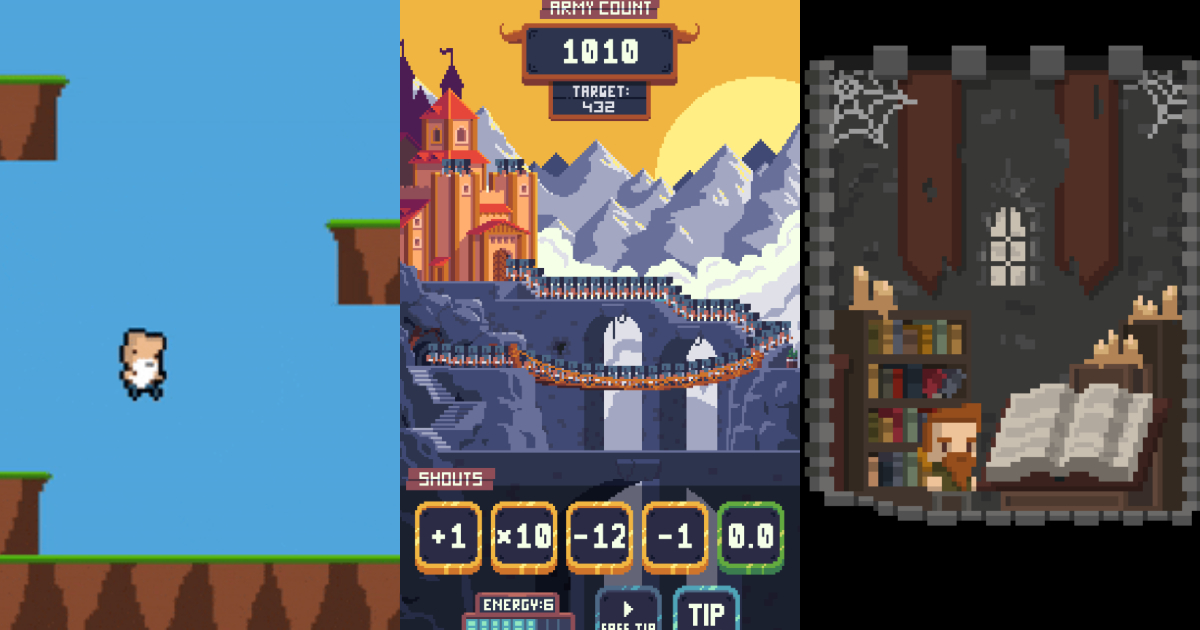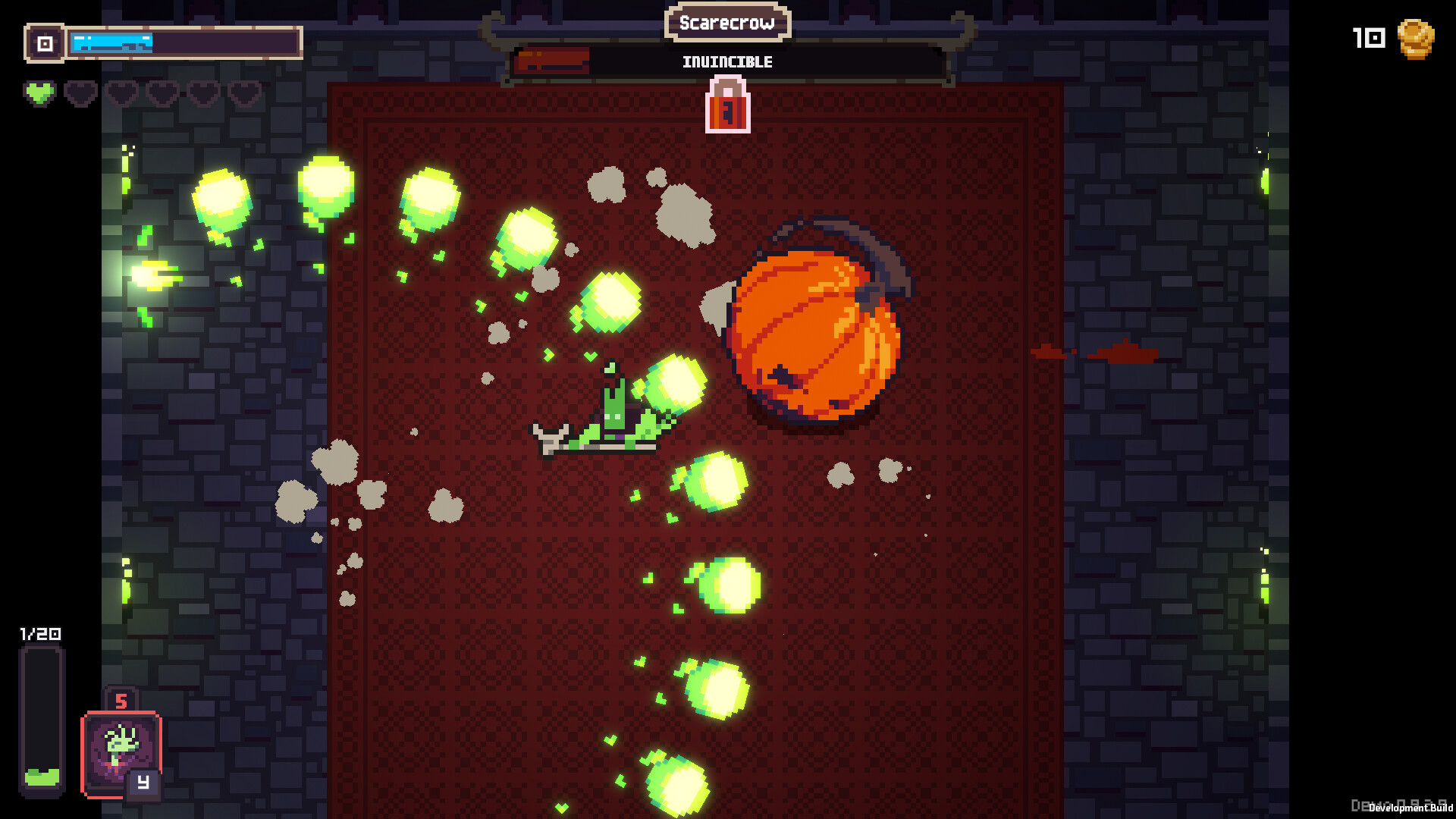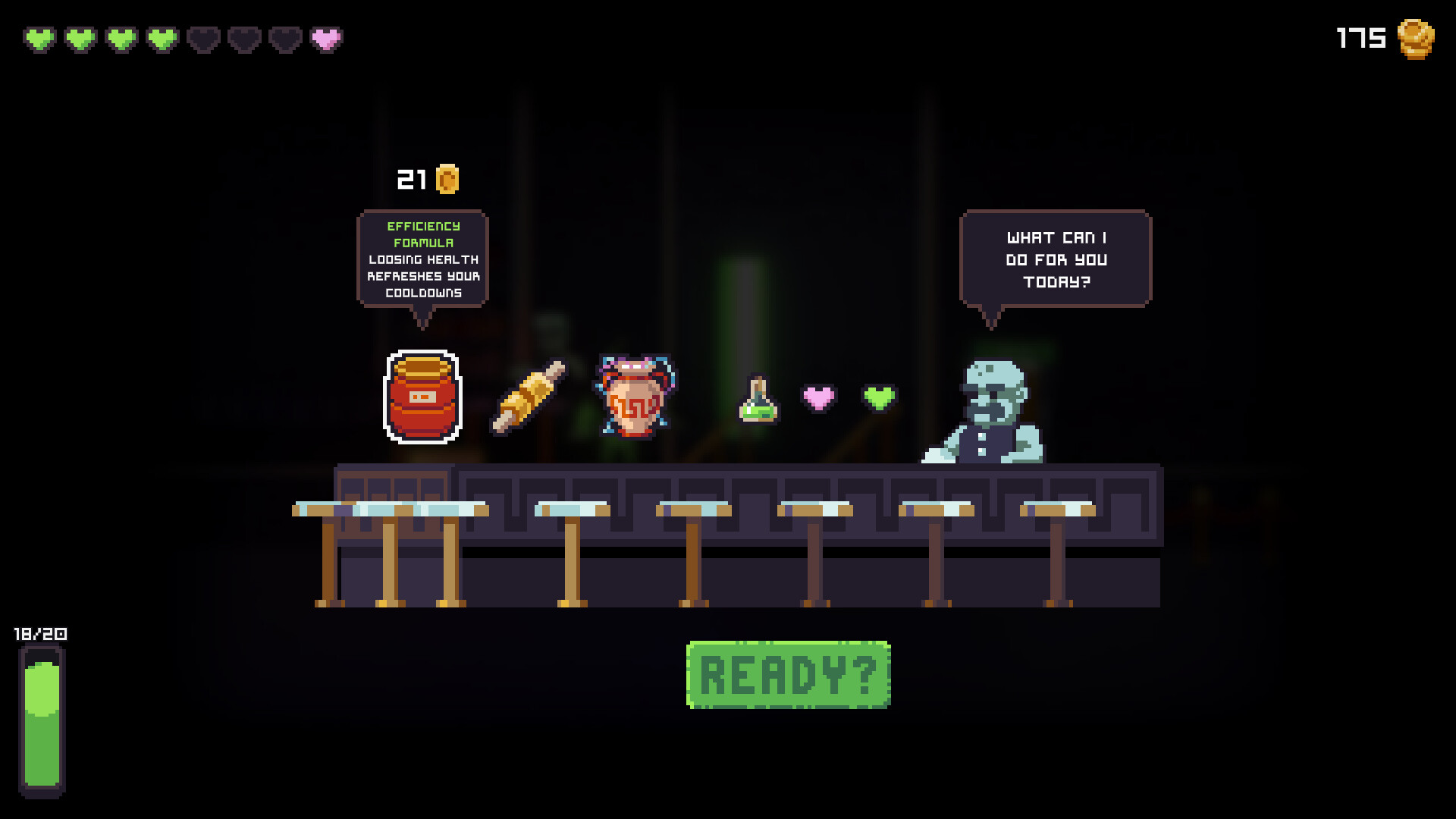What went wrong during development of NecroBouncer: lack of planning and other mistakes to avoid
Andraž Oražem, Slovenian dev and founder of one-man studio Alchemy Sheep, has shared with us some ups and downs he faced while making his upcoming roguelike game NecroBouncer. This rollercoaster journey could help many other indie creators avoid making the same mistakes.

Andraž Oražem
Hi! My name is Andraž Oražem, the sole developer behind NecroBouncer, a roguelike title about a necromancer working as a bouncer in a dungeon nightclub. The game is based in part on my own life experience, as I live in a cozy Slovenian dungeon.
While working on NecroBouncer, I had to overcome a variety of roadblocks. I’d like to share my journey with fellow solo developers in order to help them out and warn them of repeating the mistakes I made.
Long road to NecroBouncer
NecroBouncer wasn’t my very first project. I made four simple games prior to it, all of which were not original concepts, but gave me the opportunity to add my own flair. I also worked on seven projects that I never finished, including one mobile game.
It took me six months to develop this mobile title called Extreme Delivery. It’s a fairly simple game that tasks players with delivering mail as a postman on a bike. Although it generated only around 100-1000 downloads, it helped me learn more about publishing games.

Some of Andraž Oražem’s previous games
Then NecroBouncer happened. As much as I like to joke that my dungeon life greatly influenced the project’s development (especially the game’s setting), I can’t say for sure. Frankly speaking, many of my ideas for NecroBouncer came randomly while taking a shower.
I’ve always liked zombies and necromancers — especially in games — and I’ve always wanted to include them in a project. As I was working on the concept, the idea of placing these creatures against the backdrop of a nightclub suddenly came together in my head (probably during a shower). The game took on a life of its own from there. I found a way to spice up its visuals and incorporate interesting gameplay ideas.
Before I discuss bugs, engine transitions, and other typical developer issues, I need to get something out of the way. I hate nightclubs. In fact, I’ve only been to a handful of them. I’ve come to learn that bouncers typically stand in front of clubs, but I guess our NecroBouncer is an exception!
Entering @Necro_Bouncer club – let that sink in! 😎#indiegame #indiedev #pixelart #ELONMUSK #elonmusktwitter #aseprite pic.twitter.com/ctPNwKMWHL
— NecroBouncer (@Necro_Bouncer) October 27, 2022
Creating my own schedule
Let’s get back to development. Soon after I started working on NecroBouncer, I realized I needed to create a schedule that would allow me to work on the project while taking care of existing commitments.
NecroBouncer aside, I had a full-time job as a front end developer at a company that sells lenses and glasses online. In the beginning, I was making 3D models for testing the glasses online and was also in charge of a small group (along with two other people). But later on, that project fell apart and I moved to working on a couple of our webpages, mostly just frontend coding, and a couple of more practical applications for that website.
Ordinarily, my schedule at the time would look like this:
- Wake up early around 5:30-6:00 AM and work until 7:00-7:30 AM. Make some coffee for Nina, my girlfriend, and wake her up for breakfast;
- Go to work and exercise right after. Return home, shower, and eat dinner with Nina. Afterward, I would try to squeeze in a little more development time… or play online games with friends;
- If I’m home for the day, I still try to get up early, but try not to force it except when I’m on deadline (which has been the case for the past six months). I also wake Nina up with coffee and talk to her a little over cereal. Then I hug her goodbye and turn my full attention to development until noon or 1:00 PM;
- I start cooking in the early afternoon. It’s a great stress relief for me. I would like to say I eat a wide variety of food, but I usually just make myself some pasta with tomato sauce. I add some tuna if I’m feeling adventurous;
- After the break, I go back to work and type away as best as I possibly can. Sometimes I play games with friends for an hour or play piano if I’m feeling tired. The rest of the day is similar to when I am working my day job.

Solo development comes with stress and burnout
Throughout NecroBouncer’s development, I always remembered to be patient with myself. After all, I was working on the game in my spare time alongside a full-time job, which I quit only at the end of April 2022. This took a big toll on my energy and motivation. Sometimes I stopped working on the game altogether for a couple of months.
Other times, I had to work on NecroBouncer despite burning out. The most memorable moment for me was when I updated the game’s engine (more on that later) and completely reworked the input system and UI, which finally added gamepad functionality. This was a huge relief for me. It was an issue that haunted me for a long time.
Another memorable moment was when I added the NecroBouncer leveling system. After adding it to the game, the entire experience felt way better and more fun to play than ever before. It was a huge step forward in the development process.
NecroBouncer was originally designed as a free-to-play mobile game
To be honest, I play mobile games whenever I’m waiting for something. I’ve come across a bunch of really cool mobile titles, including the clicker game called Egg, Inc. It inspired me to make a clicker game myself. However, instead of clicking to acquire money, players would embark on an adventure and fight enemies along the way.
Since I was following an example, I wanted to make my game free to play. This incentivized me to explore alternative monetization methods like ads and in-app purchases. In my mind, this meant I would have to make my game worse than average in order to give players a reason to buy stuff.
After dedicating a lot of time to workaround this “issue”, I found myself making too many poor design decisions to compensate for the game’s free-to-play nature. When I initially began pitching the game, one publisher asked me, “Did you think about making the game for PC?” That was the final nail in the coffin. At that moment, I decided to switch platforms and scrap the free-to-play component.
There were a couple of features that I completely scrapped right after I moved from mobile to PC. These include the daily quests and challenges, which took me quite a while to implement, but didn’t have a purpose in the game’s PC version. The main thing I had to “give up” was time. It took me nearly a year and a half to get the game back to a level I felt was good enough to pitch to publishers again.
The sobriety is temporary, but the party at the club is eternal. 😎🎉
Woke up and nearly forgot that @Necro_Bouncer Prologue is OUT NOW!https://t.co/3MPxz3zNCj
Thanking my past self for making a reminder 😅#indiegame #indiedev #pixelart #roguelikepic.twitter.com/QFoeVbBJMd
— NecroBouncer (@Necro_Bouncer) October 13, 2022
Rebuilding the game’s UI and input system
Another thing that drove me completely crazy was that I had to update the game’s engine (I use Unity for development).
Unfortunately, A LOT of things broke down during a very important time in the game’s development. We were days away from the release of the game’s first demo. Unsurprisingly, I had to work nonstop to get the game back on its feet. The entire input system and UI had to be rebuilt from the ground up.
At the start of this process, I was extremely nervous and felt defeated. I knew I had to get it over with and tried not to think about it too much. I worked until the work was done and barely slept for the next three or four days. If I didn’t work I just thought about it, which motivated me to work more. It was an extremely stressful point in the game’s development. Thankfully, the input system started responding way better quickly, which kept my morale high in spite of the bad situation. In the end, I was tired, burnt out, and hated my computer for the next week or two, but the fix was done!
Even though I could barely think about development for a while, I was super happy I went through this process. In my opinion, these kinds of changes are probably some of the hardest for developers because you don’t actually make any progress on the game. This means the gameplay stays the same and you have nothing to show despite all the efforts.
When I work on the gameplay stuff, I’m always happy at the end of every “chapter” because I can see my work, play it, and let other people try it. Backend stuff is pretty annoying in this sense, because it requires a lot of time to get it right. Although it doesn’t look like much, it is one of those things that only gets noticed when it’s bad.

Mistakes to avoid when making your own game
These were only some of the ups and downs I experienced… If you don’t want to repeat my mistakes, keep in mind a few tips:
- Don’t make your games too big, especially at the start. Try making a game of a smaller scope and complete it as quickly as possible. Later on, when you have more experience, try to develop something bigger or scale up your current project.
- Plan out your game as much as possible. Write it on paper first and think about how it would be played. Then start conceptualizing its theme and how the theme factors into the game’s mechanics. Afterward, start asking yourself how you would program those mechanics, how the game ends, what player progression looks like, where and how the progression happens. There are a million things to think about. If it’s a small project, you can literally plan everything. I made this mistake before starting NecroBouncer’s development, which meant huge changes later on, including core mechanics. These were things that didn’t make sense from the start, but I just didn’t think them through.
- Get help. If you have a budget, pay people to help you with stuff you aren’t good at. I’m primarily working on NecroBouncer solo, but I commissioned an artist to make me awesome cover art. I also paid a musician to make a great soundtrack. These are just a few features that really elevate the game’s quality and save a lot of time.
- Show off your game as much as possible and as soon as possible! Don’t be afraid of people stealing your ideas. People have millions of ideas, but if they don’t know how to execute them well, they don’t matter. What does matter is feedback and exposure. If you have an idea that you really cherish, keep it a secret and maybe share it with a close friend or a family member. As soon as you make something that starts looking like a game, share a screenshot, make a video, and start showing it off. Ask for opinions. You don’t have to take all the advice to heart, because a lot of it can be really bad. However, even in those instances, you may be able to find something of value. After all, it may inspire a completely new project.